We’re standing in the arched doorway of the Porziuncola, a tiny stone chapel said to have been restored by a young man named Francis, shortly after he renounced his wealth for a life of poverty in the early 13th century. Around and above us, enclosing the small church completely, soar the vast columns and arches of the Basilica di Santa Maria degli Angeli, one of the largest cathedrals in the world. It’s a jaw-dropping sight, and something of an irony in the context of the humble man who would later be canonised a saint. Welcome to Assisi.

The spiritual heart of the Franciscan order and a major pilgrimage site for Catholics, the Umbrian hill town of Assisi lures up to five million people each year to its narrow cobbled streets and ornate churches. Despite the crowds, it’s a striking city; rising from the fields below, it undulates over the slopes of Monte Subasio, a sea of pale-coloured buildings dominated by the dramatic, ship-like edifice of the Basilica di San Francesco.
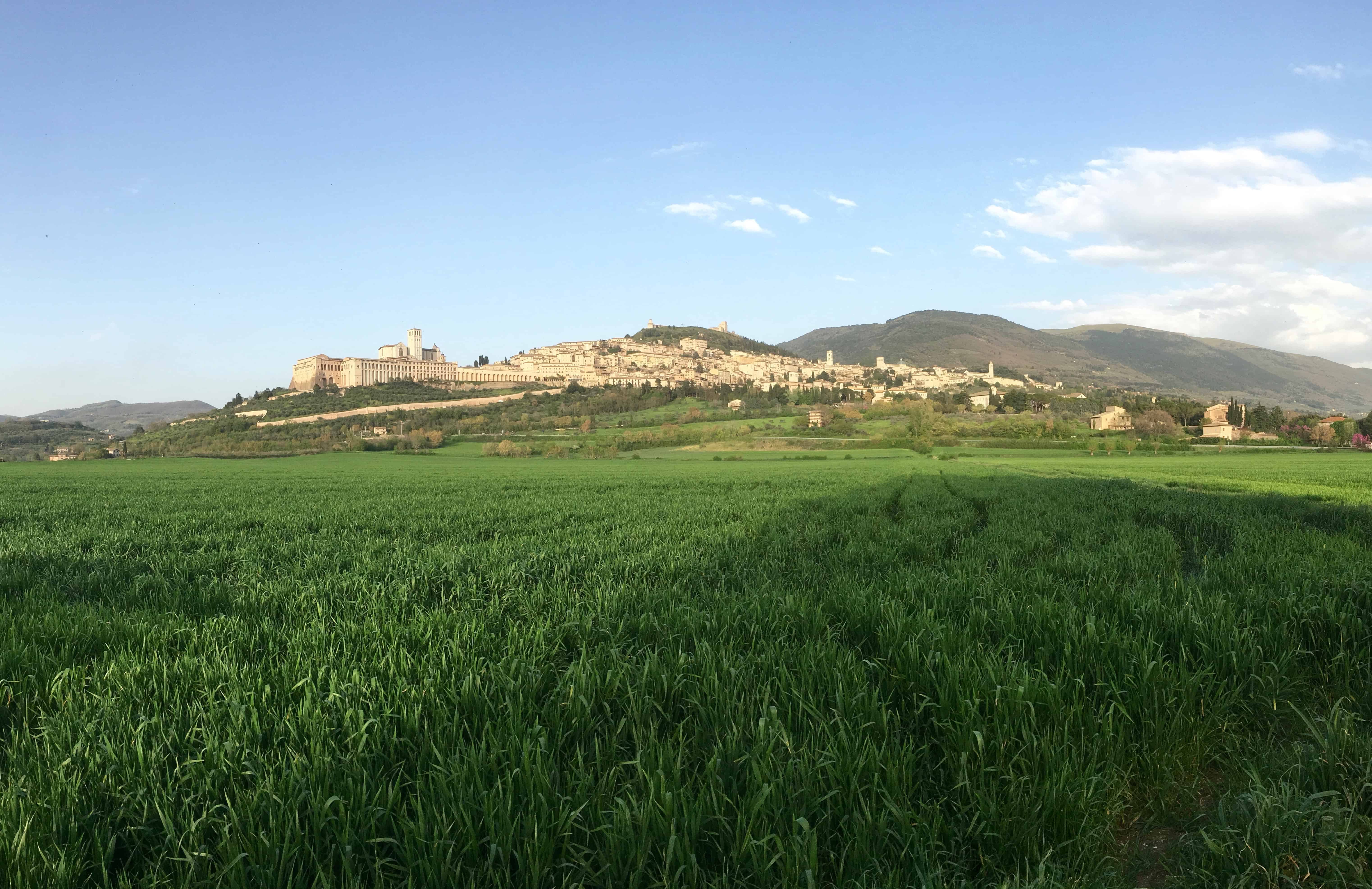
While St Francis put Assisi on the religious world map, and while the art and architecture of the city’s Franciscan sites have seen it inscribed as World Heritage, Assisi’s history is long and rich. Today, the city’s medieval spirit lives on in its streetscapes while tantalising glimpses of the ancient Roman city of Asisium also dot the town, above and below street level.
The purposeful strider can cover Assisi end to end in less than half an hour. But with so much to see and do in this town, the only justification for such a mission would surely be a melting gelato waiting at the other end. From the heights of the Rocca Maggiore fortress above the city to the valley floor below, our walking blitz on Assisi takes place over two full days, leaving our calves screaming and our fresco-meters on overload. But there is gelato along the way, and wine, and that’s all the motivation these two need.
Here’s our take-out of the city’s heavenly highlights:
Assisi’s churches are sublime
As the spiritual and physical heartland of the Franciscan order, you can’t turn a corner in Assisi without stumbling upon a church: ironically, some of the most finely constructed and exquisitely decorated houses of worship in the world. While their opulence is seemingly at odds with the life and teachings of St Francis, most claim a direct connection with the humble saint, from the small and elegant 17th century Chiesa Nuova, said to have been built over his birthplace and childhood home, to the monumental dual-level expanse of the 13th century Basilica di San Francesco, where his remains are interred.
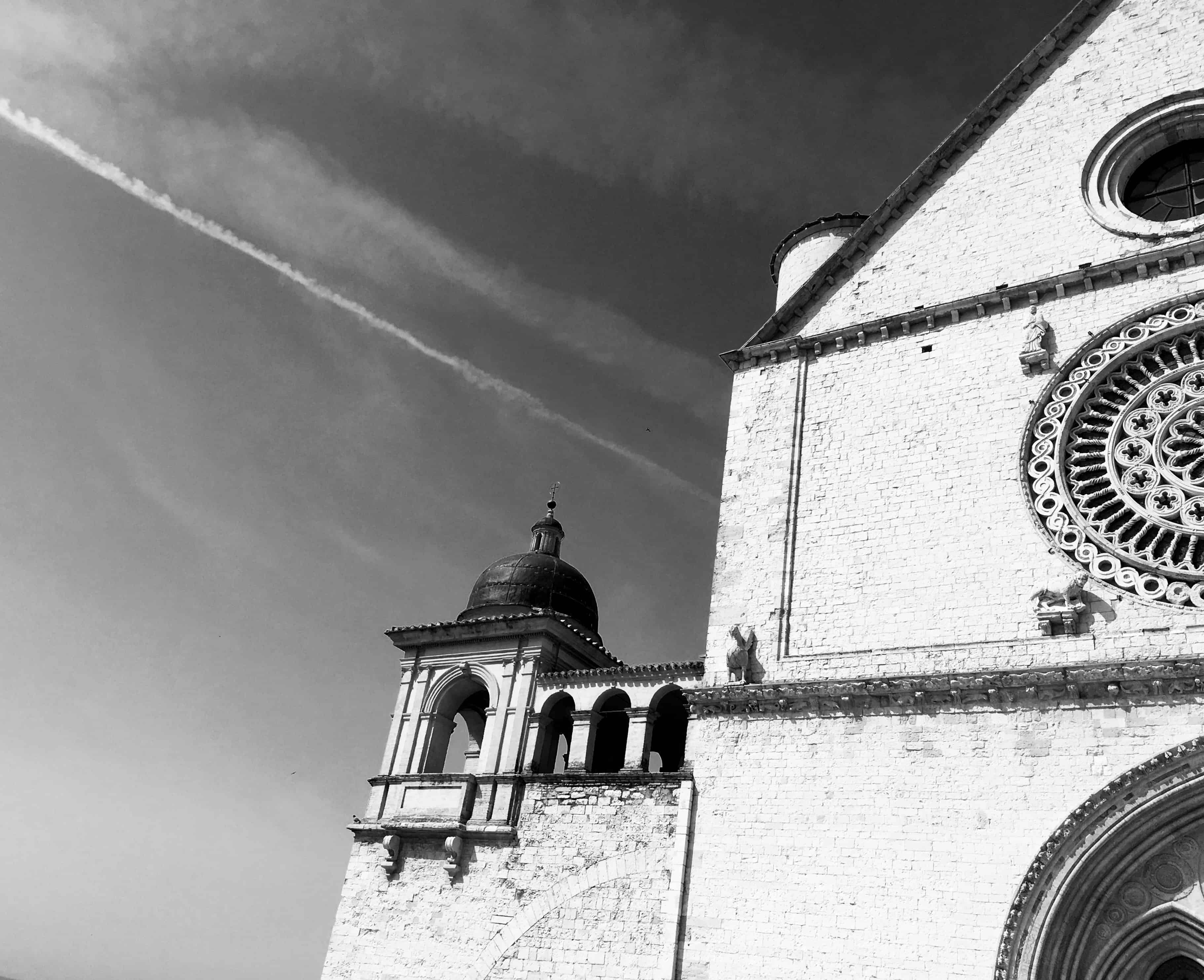
Much of our Assisi visit is spent craning our necks at walls and ceilings covered in vivid and masterful frescoes, or perched on pews watching the rapt expressions of tourists and pilgrims. Contradictions aside, Assisi’s churches – even the most austere – are breathtakingly beautiful.
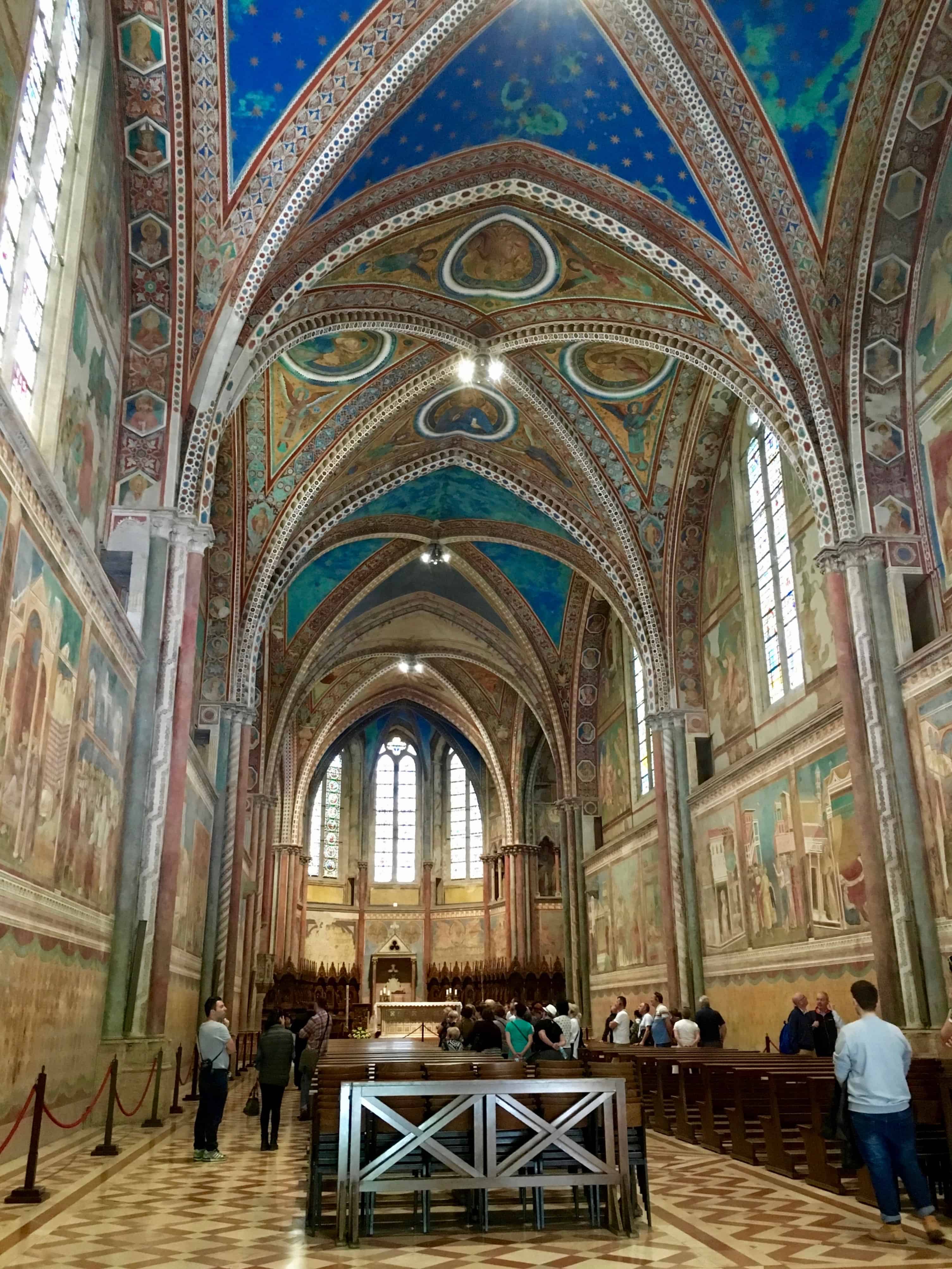
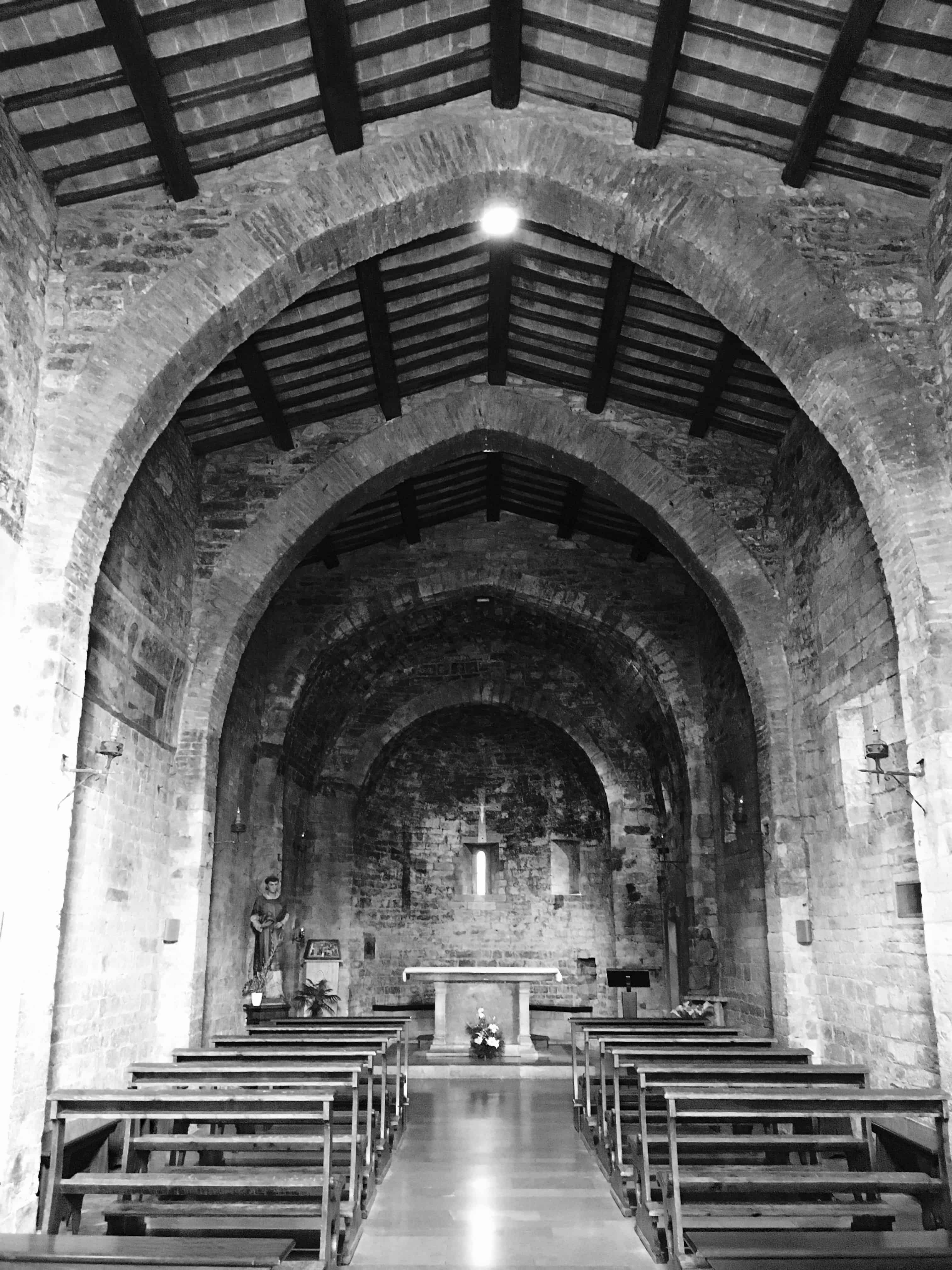
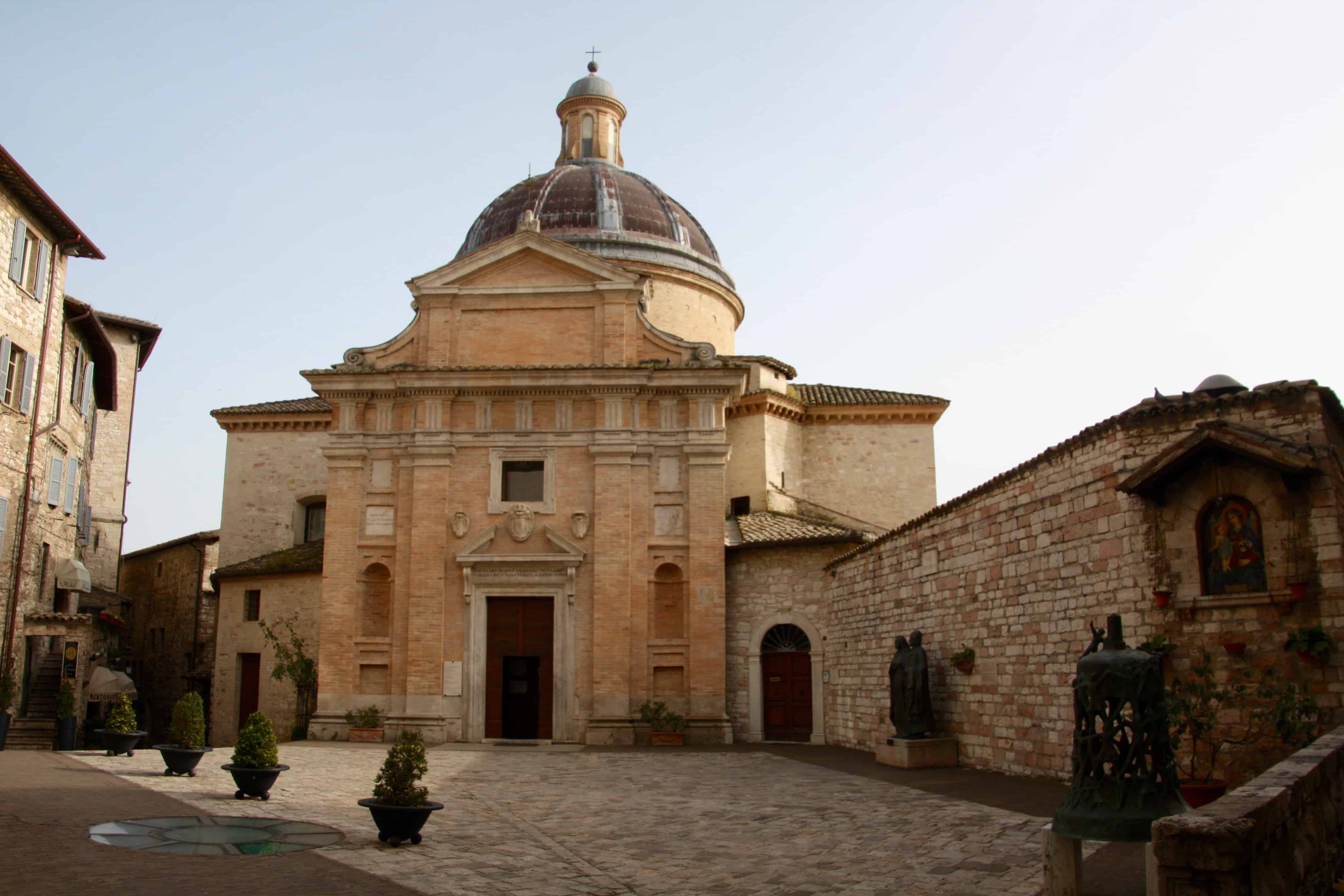
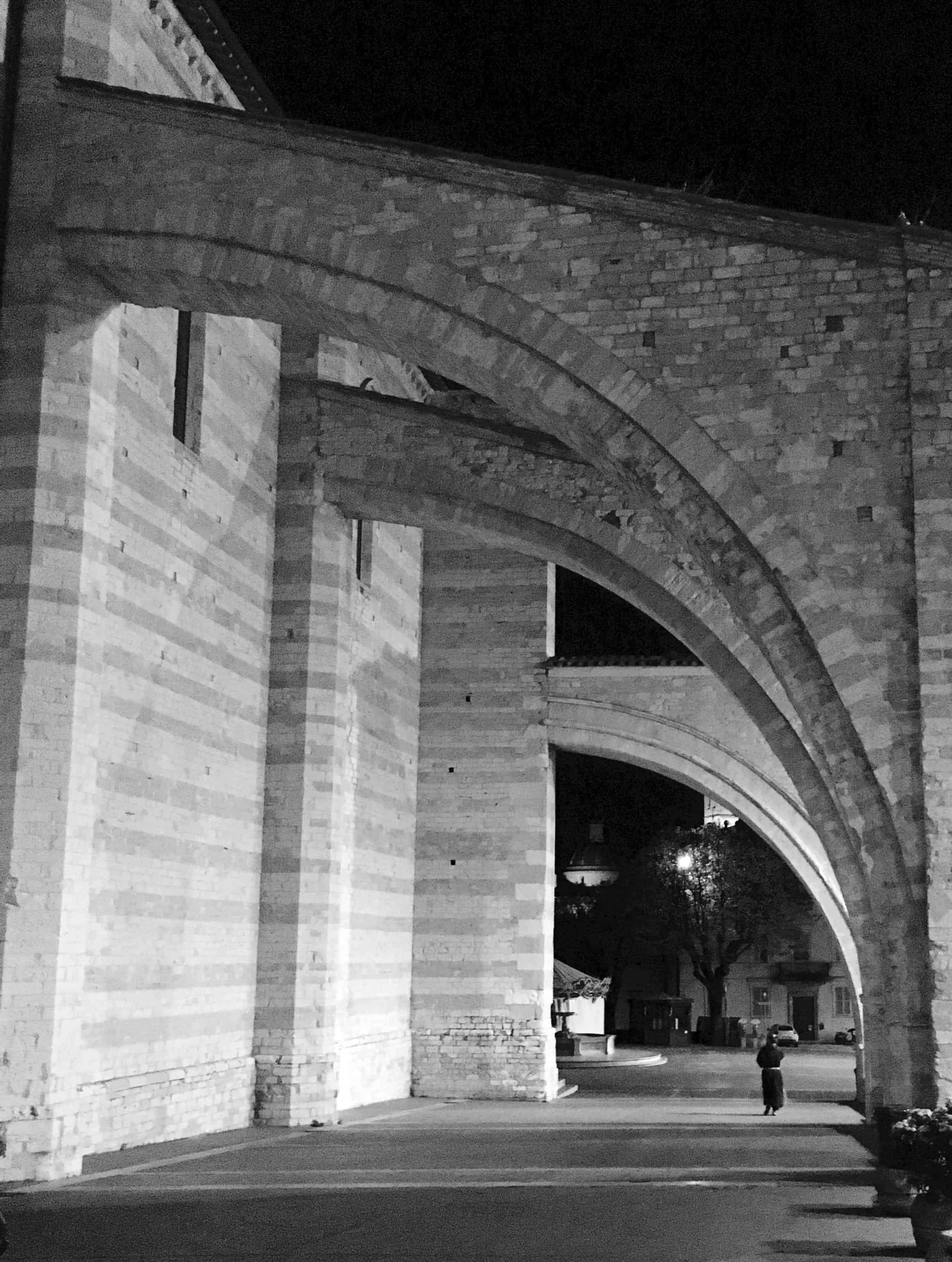
Assisi’s ancient past is just below the surface
Long before St Francis walked the streets of Assisi, the Ancient Romans built a town they named Asisium on the rises of Monte Subasio. While just about every visitor to Assisi stops to admire the most obvious relic from the period, the distinctively Roman Temple of Minerva in the Piazza del Comune, few realise that several metres below their feet lie the remains of the ancient forum onto which the Temple once opened via two staircases, now several metres below ground and accessible through the nearby Civic Museum. The white lines on the piazza that we initially take for traffic markings actually trace out the edges of the ancient forum and the podium that still resides at its heart.
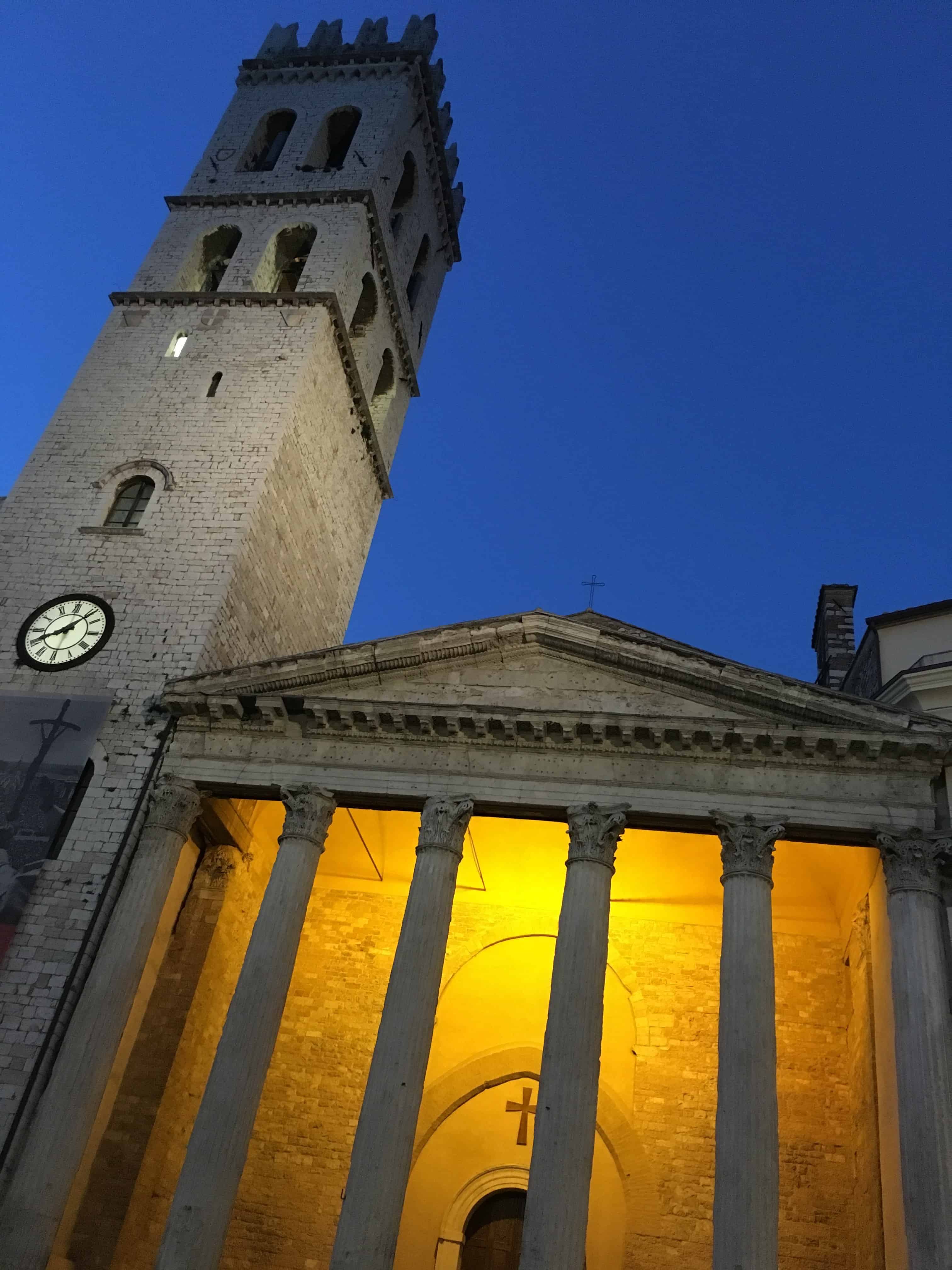

We also go in search of Assisi’s 1st century AD Roman amphitheatre, located in the city’s north-east at the Via dell’ Antiteatro Romano. The only hint of its existence today is a curving street of pretty medieval houses and a wall enclosing a garden, a travertine arch, and some Roman wash basins. It takes a little imagination, but it’s a charming spot all the same.
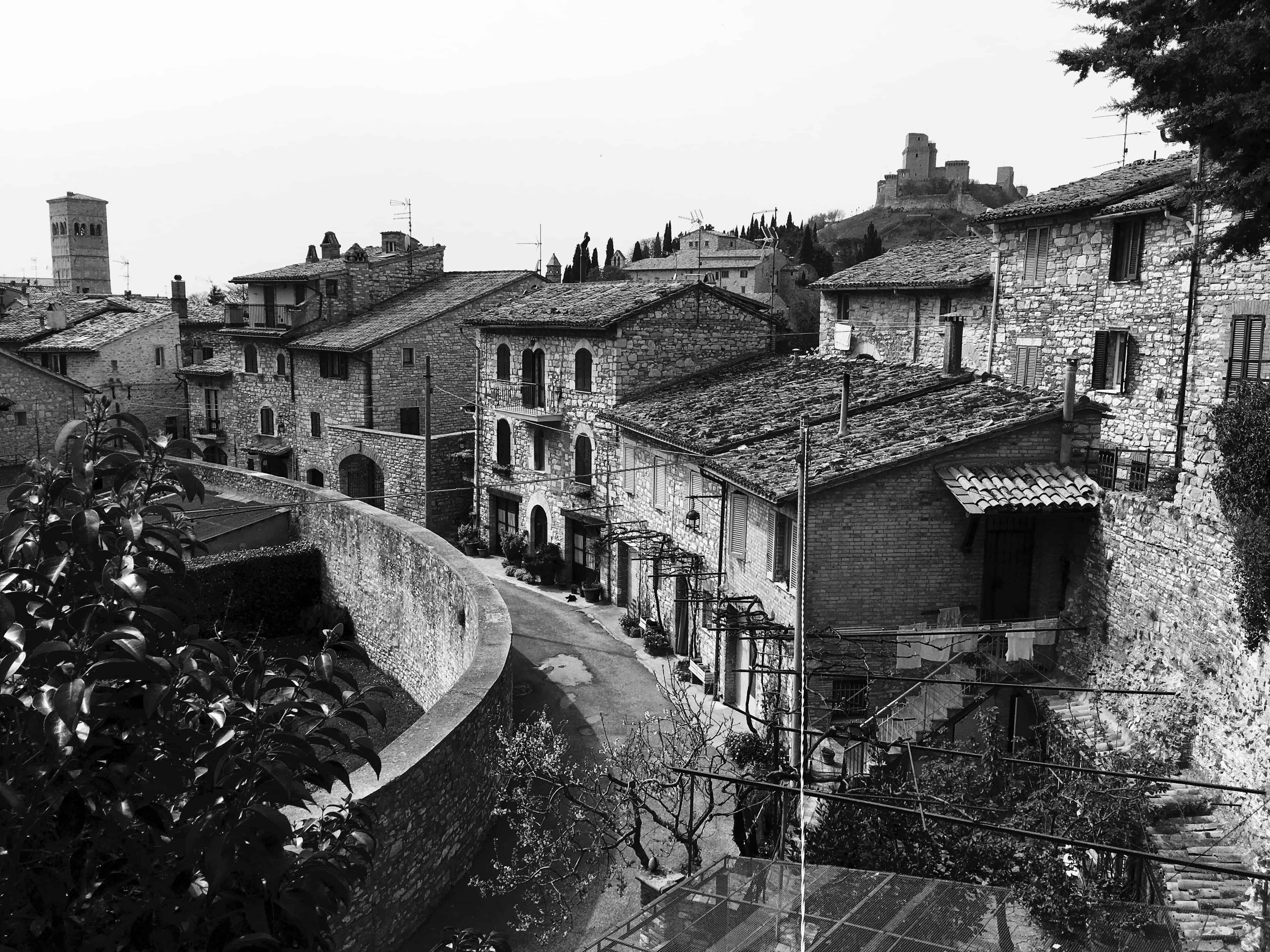
The streetscapes are a delight and the views are stunning
Thanks to its location and long-term significance, Assisi is well maintained and has changed little over the centuries. Today the city retains much of its medieval architecture and character and its cobbled streets are a joy to wander and snap, by day and by night.

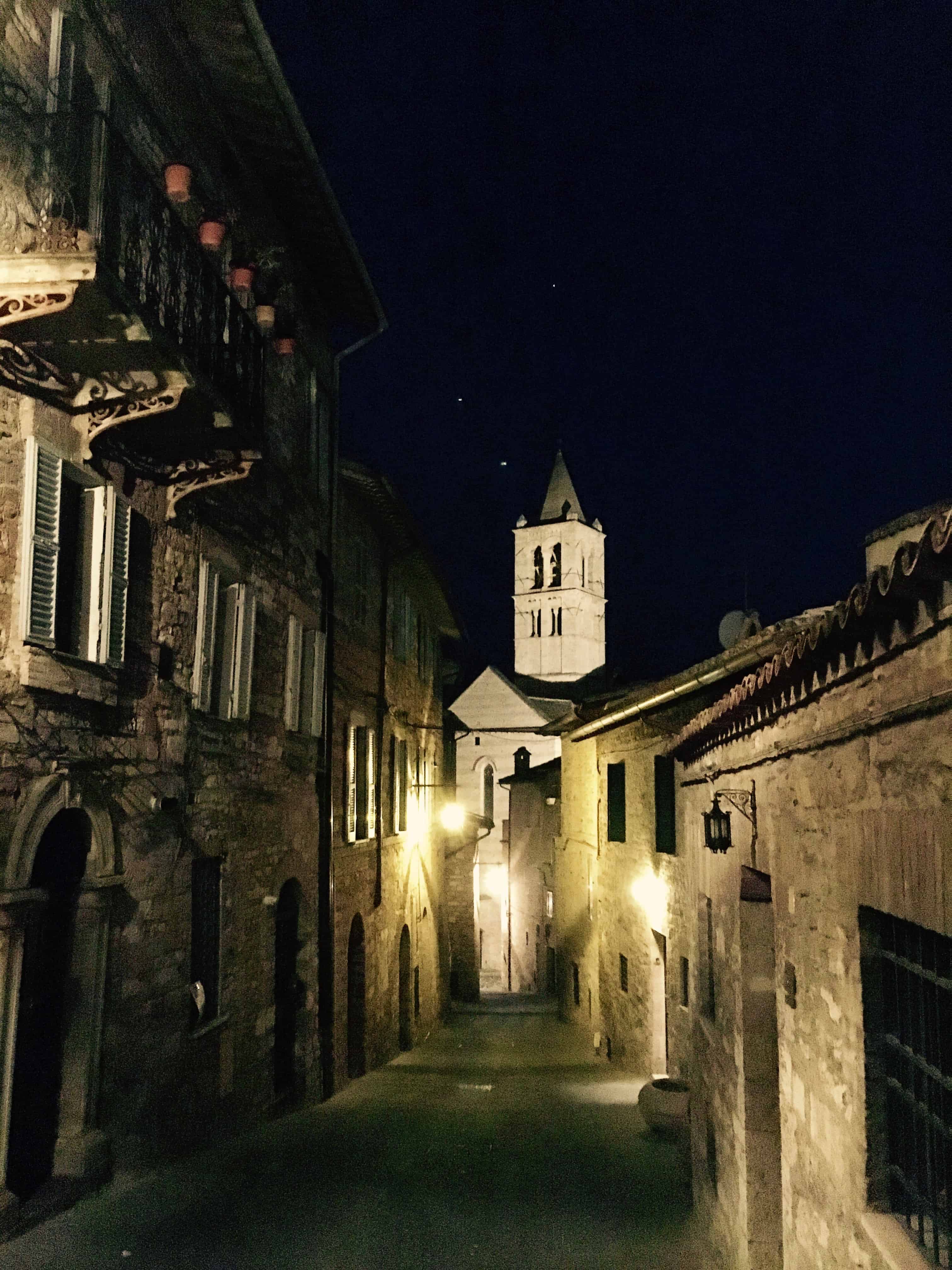
Plus, sweeping as it does up a hill, Assisi offers spectacular views over the surrounding countryside, from the panoramas atop the walls of the medieval castle, Rocco Maggiore, to the teasing glimpses of bright green fields between the city’s medieval buildings.

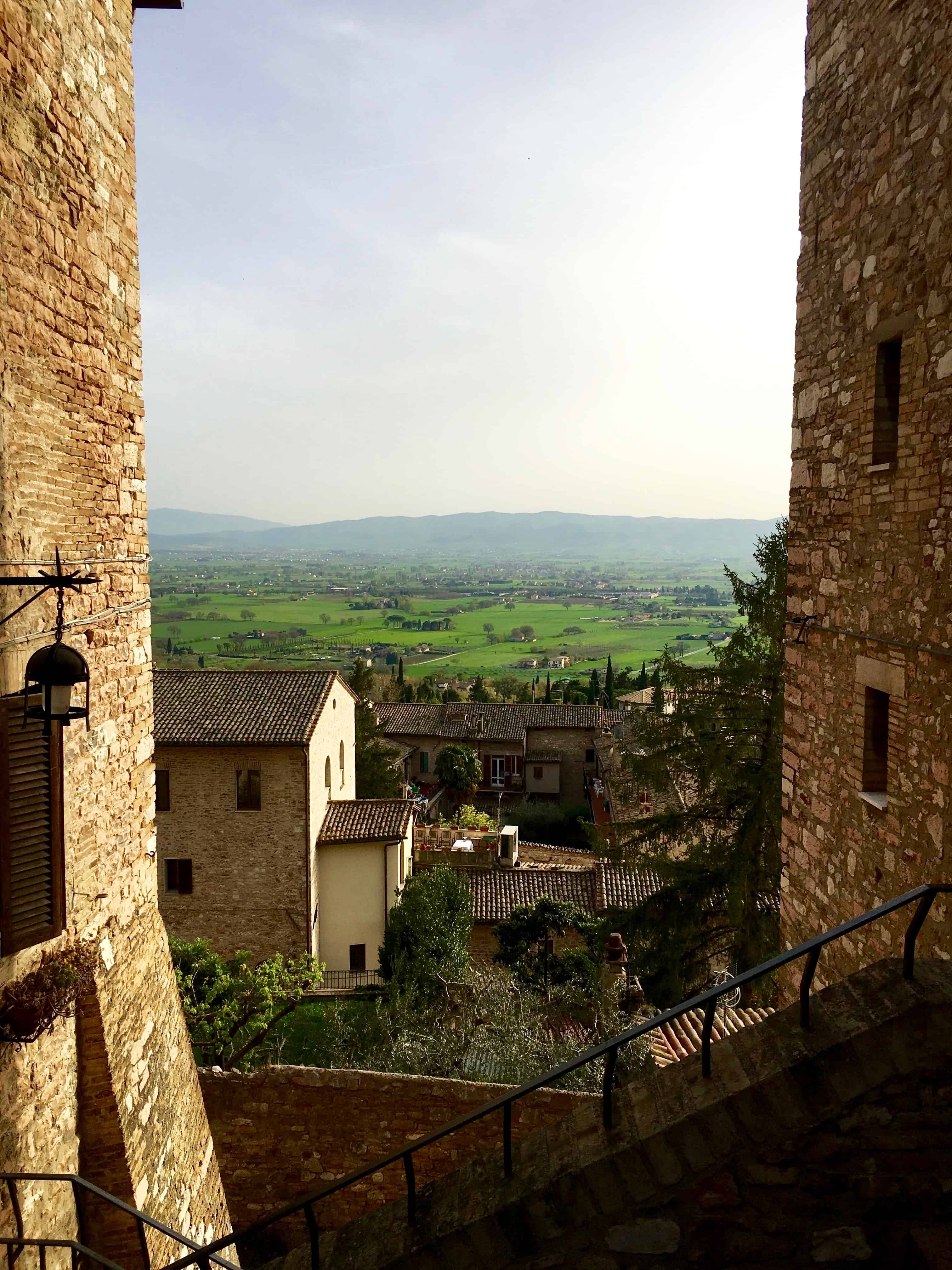
It has second-to-none sunsets
Asissi’s hillside setting and its south-west aspect also mean gorgeous sunset vistas. There are perfect spots for watching the sun dip all over the city, but we choose to gather with the buzzing crowds at the Piazza di Santa Chiara to watch as the city’s buildings begin to glow and the sky turns burnt orange.

Better yet, it has gelato and wine
What Italian city tour is a fait accompli without a sampling of the local gelato and wine? While our biggest challenge in the ice cream department is sticking to just one scoop a day, we’re less conflicted about our choice of tipple stop: the atmospheric wine bar Bibenda. Taking up a seat beneath a medieval vaulted arcade, we taste a handful of regional wines under the tutorship of owner sommelier Nila, the perfect wind-down to a day hiking the cobbled streets.


On our last night in Assisi, we’re drawn to the sounds of drumming as we walk back to our hotel and come across a band of young guys practising routines in the near dark for the upcoming Calendimaggio, an annual spring festival celebrating the medieval ‘battles’ between upper and lower Assisi.
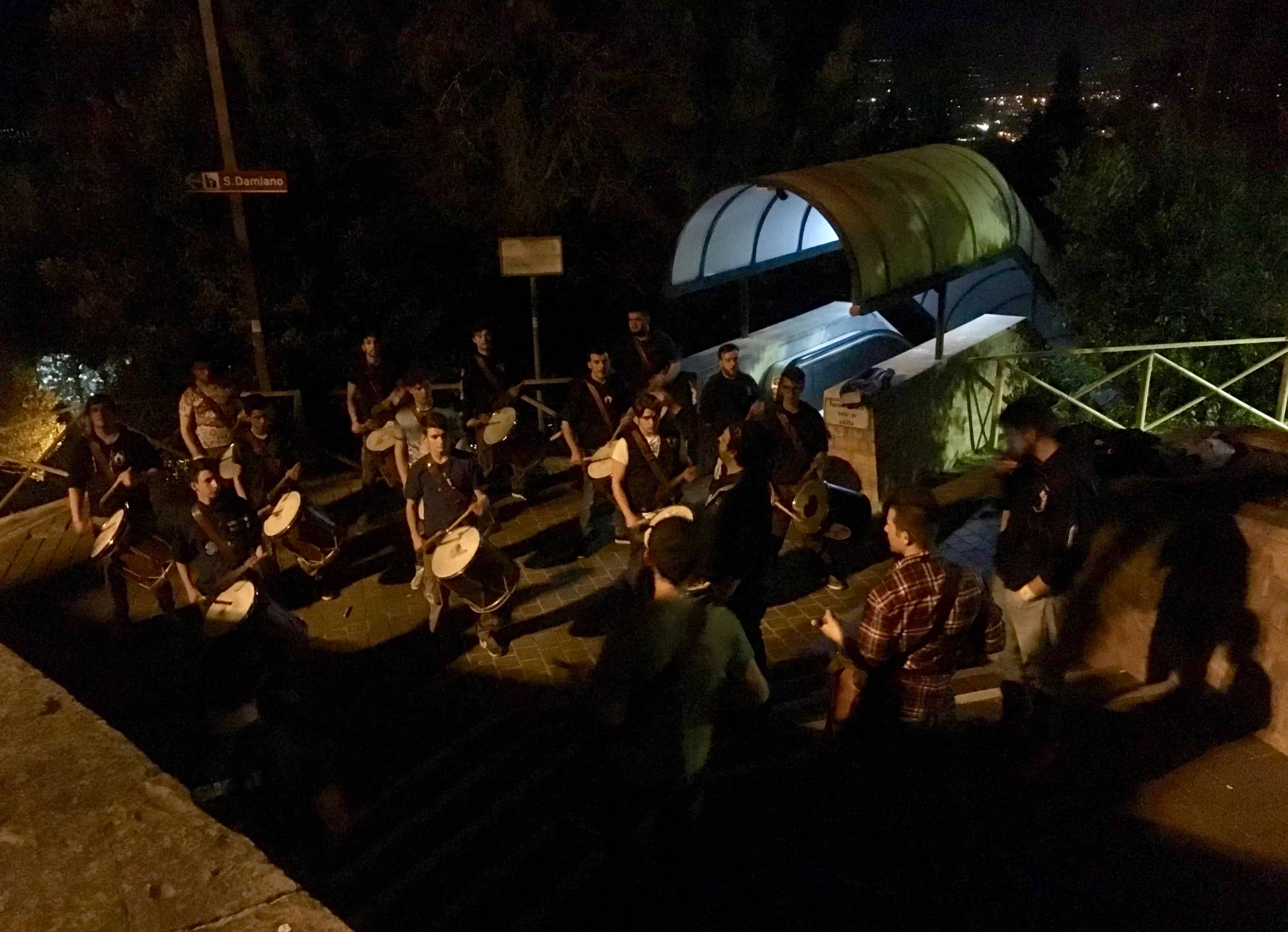
It’s a fitting end to our visit: to walk the streets of Assisi is to journey into its past. It’s a time travel that’s both inspiring and thought-provoking.
Good to know
Getting to Assisi
Assisi is in Umbria, in the Province of Perugia and is a similar distance from Rome as it is from Florence. The city can be reached by car or train from both cities in about 2- 2.5 hours, although not all trains are direct and you still need to take a bus from the train station at Santa Maria Degli Angeli up to the old town of Assisi. Buses also travel from both cities and take around 2.5-3hrs.
Travel tips for Assisi
Aim for a couple of days to explore Assisi and surrounds. The old town itself is worth two days at least, especially if you want to climb up to the Rocco Maggiore and also head down into the valley for more sightseeing (try and head down to the valley one afternoon to catch the late sun shining onto Assisi – beautiful!).
The nearby walled hill town of Spello is a tiny delight and perfect for an afternoon visit, with medieval stone buildings, the 2,000 year-old Arch of Augustus, and the Santa Maria Maggiore church with beautiful early 16th century Pinturicchio frescoes in the Baglioni Chapel (look under your feet in the chapel too, the floor is paved with painted and glazed majolica tiles dated to the mid-1500s).
Drop us a message below if you have any questions or comments about things to do in Assisi. For more experiences and itineraries for Italy, head over to our Italy page.

You have the wow factor in your webpage! Fantastic!
Thank you!! A labour of love. 🙂